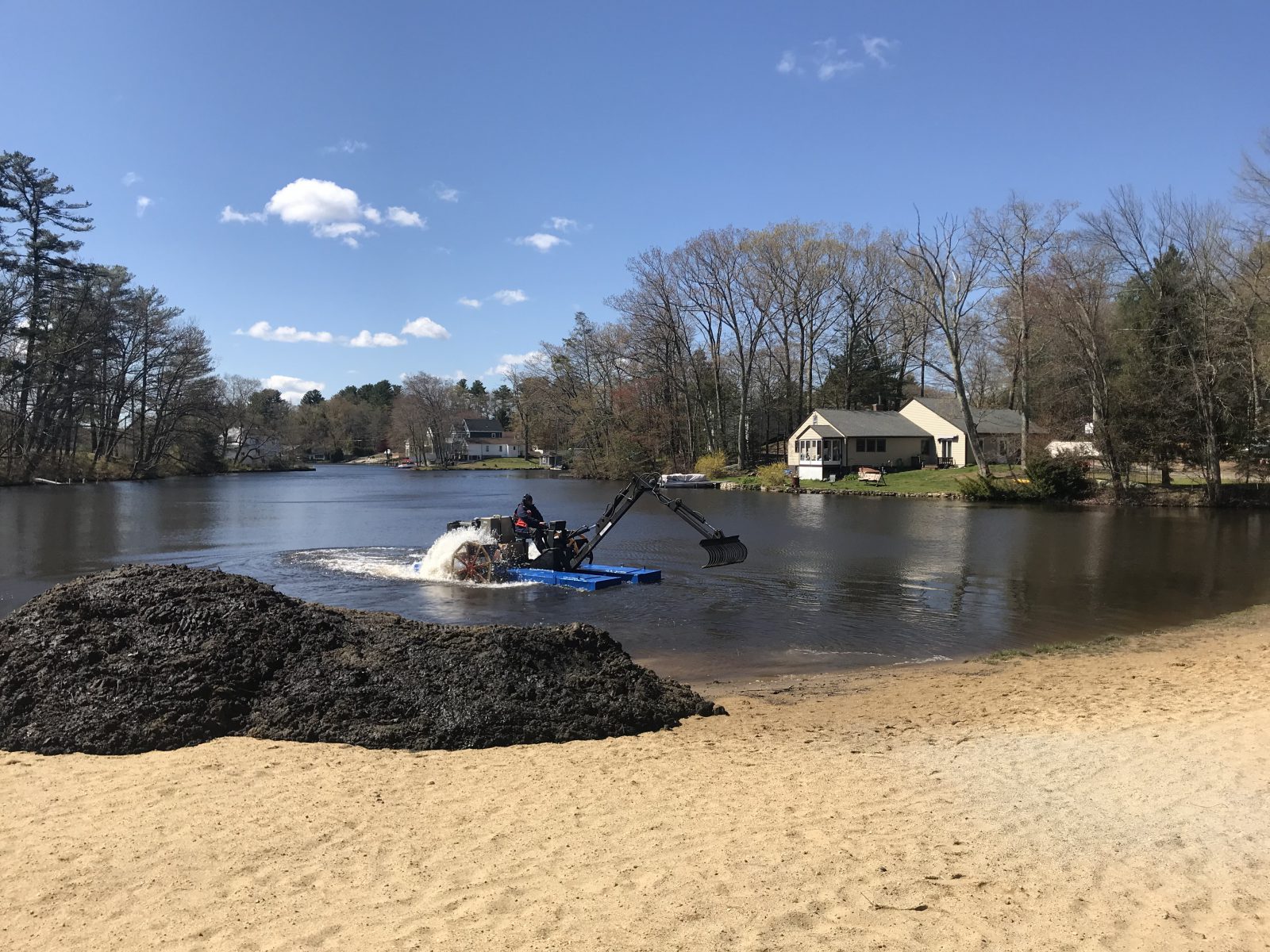
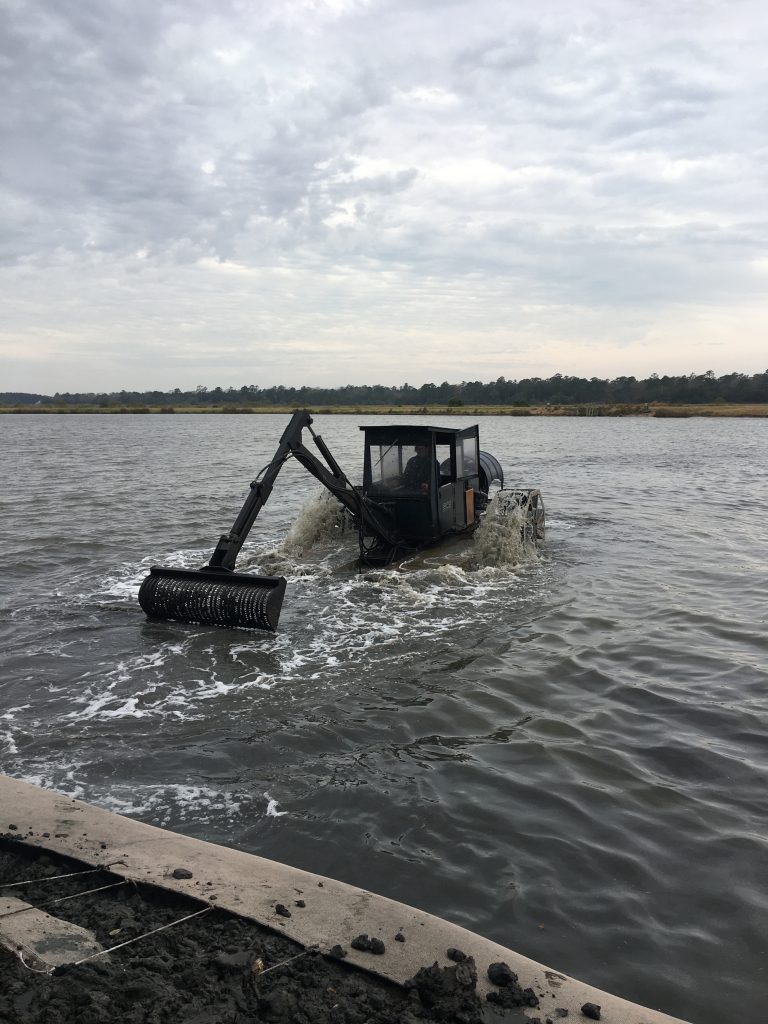
Muck Removal, Sediment Removal, & Cattail Removal Service
There are several proactive management strategies that help slow a waterbody’s aging process such as aeration, nutrient remediation, and buffer management. Though these practices help keep your lake or pond healthy, there will still come a time where your waterbody will reach the end of its lifespan.
Luckily, there are several ways that SOLitude Lake Management can restore your waterbody for years to come:
- Hydro-raking: Muck removal and cattail removal service
- Mechanical Dredging: Muck removal, large-scale cattail removal service, and sediment removal
- Hydraulic Dredging: Large volume sediment and hard debris removal
- Dry Dredging: Waterbody requires a dramatic change
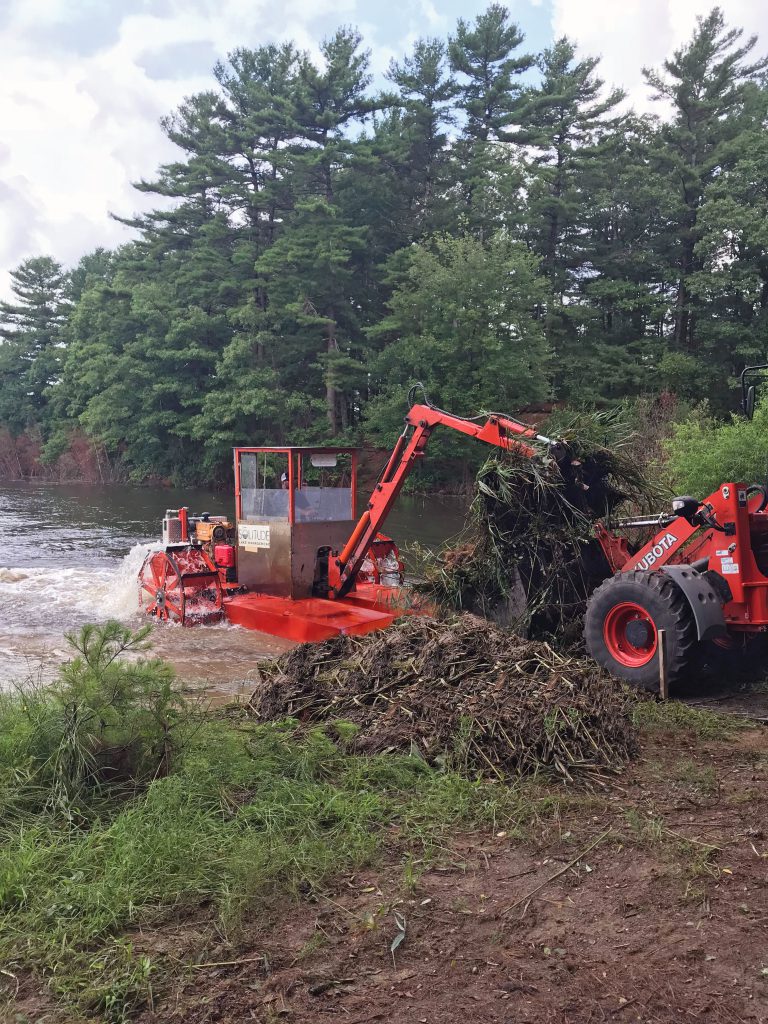
Hydro-Raking: Muck Removal and Cattail Removal Service
Mechanical raking or hydro-raking is an environmentally friendly tool used for organic pond muck removal and scooping debris from the bottom of lakes and ponds. This floating barge can also be used to naturally and selectively remove nuisance lake and pond weeds, including cattail removal service.
The hydro-rake works in water as shallow as 1 foot and can restore depths ranging from 18 inches to 10 feet. This management solution is ideal for waterbodies that haven’t reached the end of their lifespan.
Advantages of Hydro-Raking:
- Removes plants and debris at the sediment-water interface.
- Operates in water depths ranging from 18 inches to 10 feet.
- Removes plants and roots systems, as well as decaying organic matter, soft sediment, and debris.
- Provides anywhere from one to three years or longer of muck buildup through only one service, depending on conditions.
- Clears selective areas including beaches as well as boating and fishing lanes.
- Offers an environmentally friendly solution with no water use restrictions, since chemicals are not used.
- Helps preserve shoreline landscapes.
- Lake dredging services are more expensive than hydro raking
- Effective for cattail removal
Dredging: Sediment Removal, Cattail Removal Service & Shoreline Restorationd
When a waterbody can no longer be saved through proactive management methods or hydro-raking, the next best solution is pond dredging. This management method is used to increase depth and remove nutrient-heavy sediments. Fortunately, there are multiple canal, lake and pond dredging options available that can accommodate various properties, environmental restrictions, budgets and waterbody types.
Mechanical dredging and hydraulic dredging are two excellent management services used to restore lakes and ponds back to their functioning state. Though pond or lake dredging services are costly, the investment will be well worth it and can give years back to your waterbody for you to enjoy.
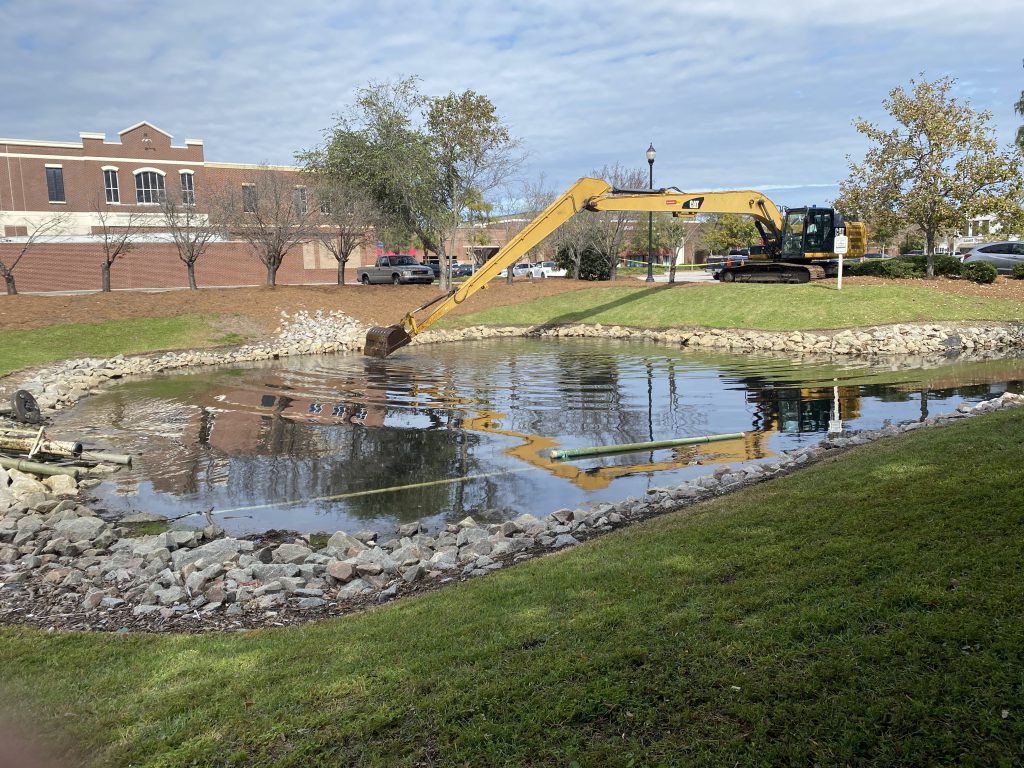
Mechanical Dredging
Mechanical dredges (pond dredging) use buckets to excavate sediments and transfer them to barges or trucks for disposal or beneficial reuse. Truck transportable mechanical dredges such as Aquamogs can be delivered to virtually any waterbody to remove sediments in targeted areas or to clear rooted marginal plants such as cattails from stormwater detention basins or flood control channels.
- For most ponds, the most cost-effective option is mechanical dredging with a floating excavator or Aquamog that is capable of direct sediment transfer to dump trucks.
- Large-scale cattail removal service is often best achieved utilizing mechanical dredges such as Aquamogs.
If your waterbody has reached the point where its form or function requires a dramatic change and can be drained completely of water, dry dredging using conventional excavation equipment may also be an option.
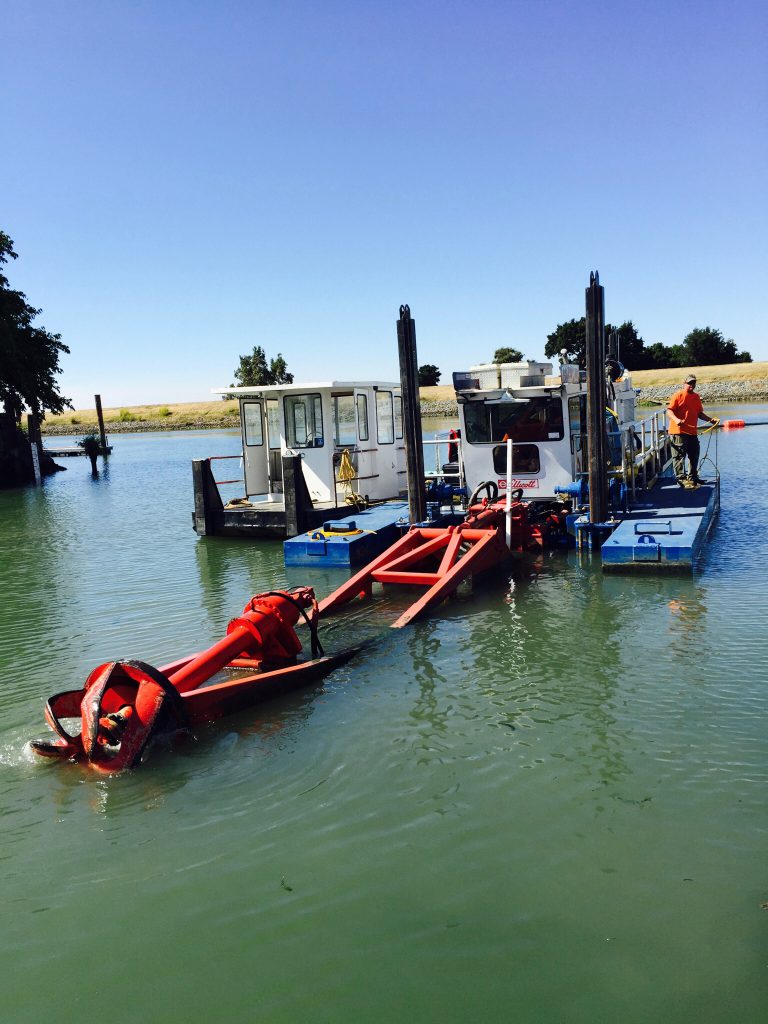
Hydraulic Dredging
Hydraulic dredges are the workhorse of the lake dredging services and are effective in moving large volumes of organic and inorganic sediments. They utilize a rotating underwater cutter and pumps to create a liquid slurry (a mixture of sediment and water) which is transferred to a disposal site via a floating pipeline. Hydraulic dredges have almost continuous operating cycles, facilitating the removal of large volumes of material in a short time, while minimizing turbidity in the water column. This method is better suited for sediments with relatively low levels of rocks and hard debris as they can damage the cutter and clog the pipeline.
- Hydraulic dredging is generally preferred for lakes, rivers, and wetlands when the volumes are large and site logistics favor the transfer of sediments via pipeline over many truck trips.
- In smaller waterbodies, one must also consider how to replace several thousand gallons per minute of a water and sediment slurry that is pumped with a typical hydraulic dredge.
- Hydraulic dredging also requires large disposal ponds to allow natural drying of the slurry or portable dewatering equipment to squeeze enough water from the sediment so it can be transported by truck to a disposal site.
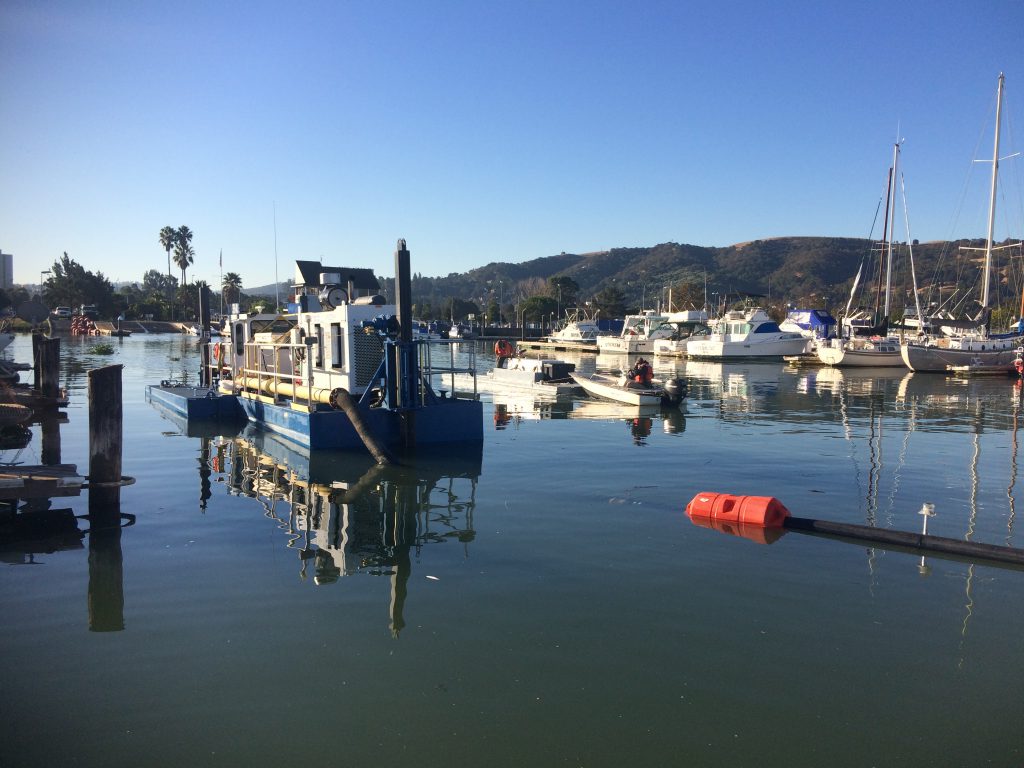
Is Canal, Lake or Pond Dredging the Right Solution?
When a lake homeowner calls complaining of pond sludge, the first question that’s usually asked is, “How much does it cost to dredge?”In reality, there are hundreds of variables that determine the cost to dredge and restore a lake. Moreover there are many sediment removal options available. Hydraulic dredging, sand dredging, clam shell/ backhoe dredging, dry dredging and hydro-raking are just a few. The chosen method will depend on a number of factors including sediment composition, environmental sensitivity, volumes of materials removed, budget and disposal considerations.
But there are 3 main ones to consider when determining the cost to dredge your unique waterbody:
- How much muck and pond sludge is there to dredge?
- Where can you put the material that is coming out of the lake?
- What is the nature of the material to be dredged
In order to determine a quantity, the first thing that is required is to perform a pre-dredge lake mapping survey (bathymetry). It is money well spent at this stage to hire an experienced lake mapping surveyor with proper insurance and credentials.
After quantifying how much sediment needs to be removed, the next step is to find a place to put it (dewatering). Most people underestimate the amount of muck and pond sludge that comes out of the lake. The size of the area you will need will depend on many factors with the number one being the lay of the land. Usually for every two acres of lake that you dredge, an average of three-foot of pond sludge, you will need an acre of upland area to place the material.
Hydraulic dredges are the workhorse of the sand dredging industry and are effective in moving large volumes of organic and inorganic sediment. They work by sucking pond sludge from the bottom and then pumping it to an offshore location through a pipeline. The final question to answer is the material characteristics. Muck and pond sludge is generally a combination of silt, clay, and organics; often sand in the very end of the coves. Sand dredging is more costly to pump further, but easier to dewater; while muck pumps are easy, but can be costly to dewater, particularly if the disposal area size is limited. Hard packed sand, or hardpan clay bottom, is more difficult to cut, and therefore more expensive. Rock is even more expensive and most often cost-prohibitive.
We encourage you to contact your local pond dredging contractor at SOLitude to determine the right solution for your unique waterbody.
Who We Are
Complete the form below or call 888-480-5253 to speak with the expert lake dredging company, SOLitude Lake Management, about cattail removal service, muck removal and pond dredging services.









